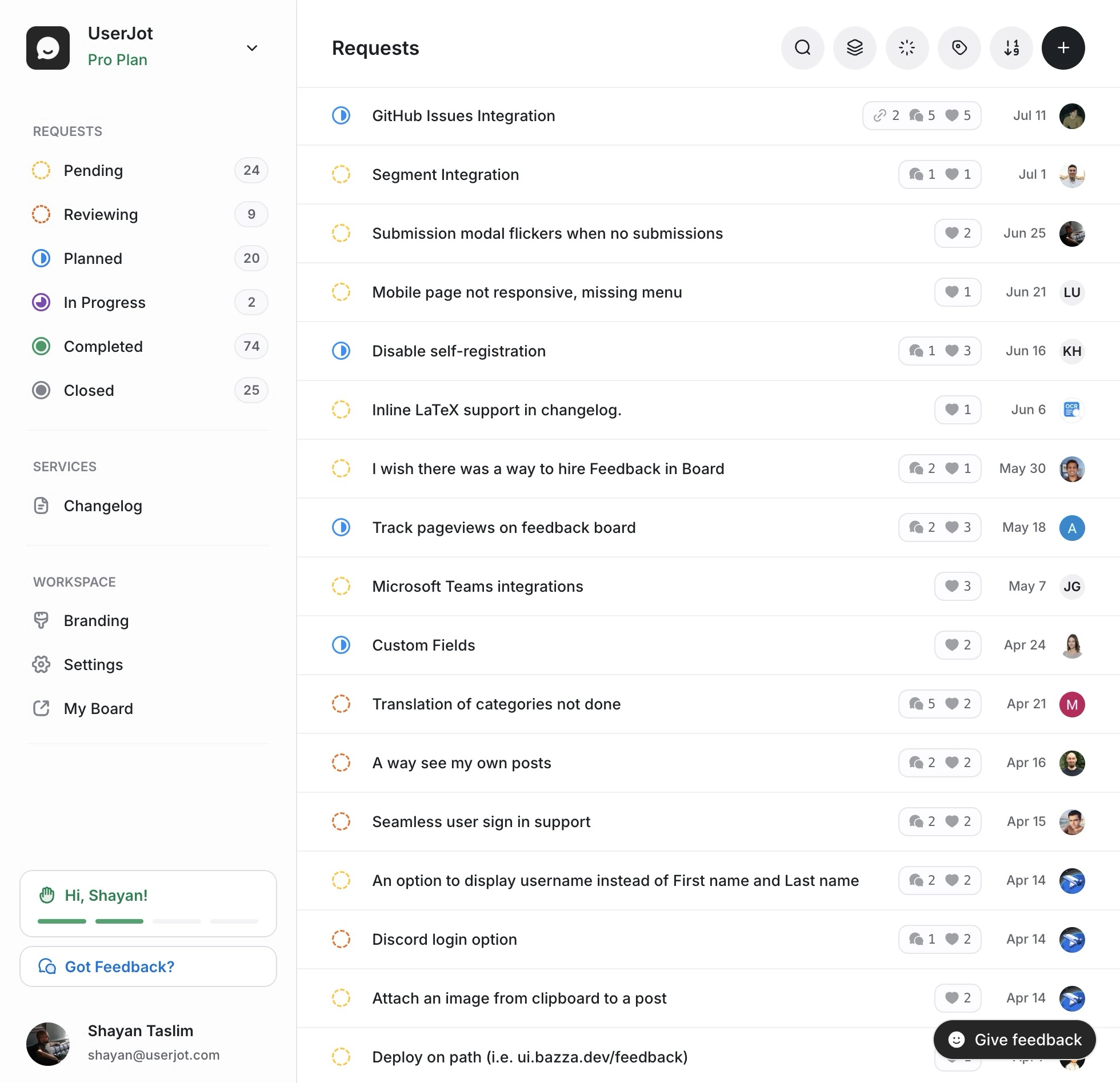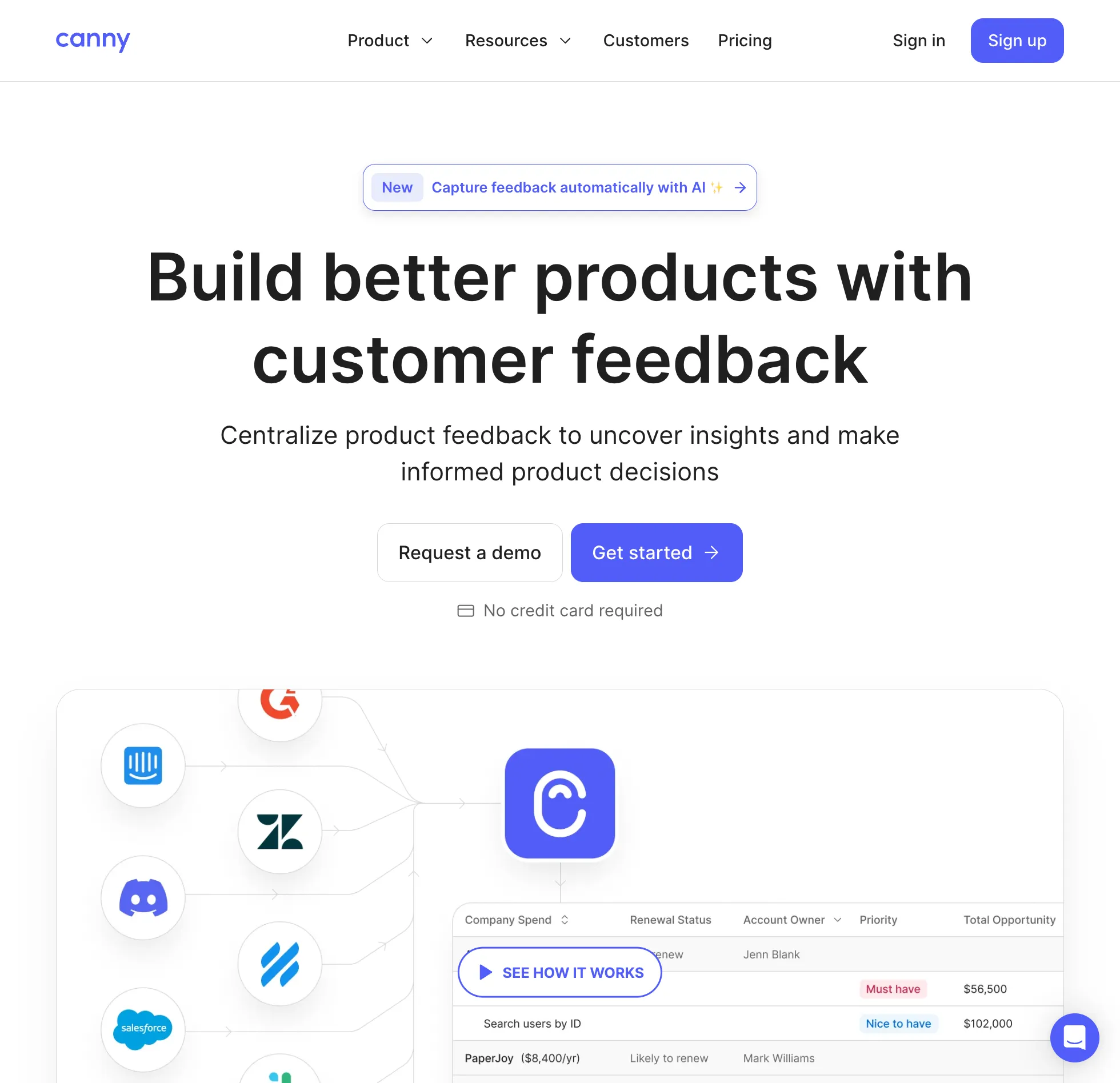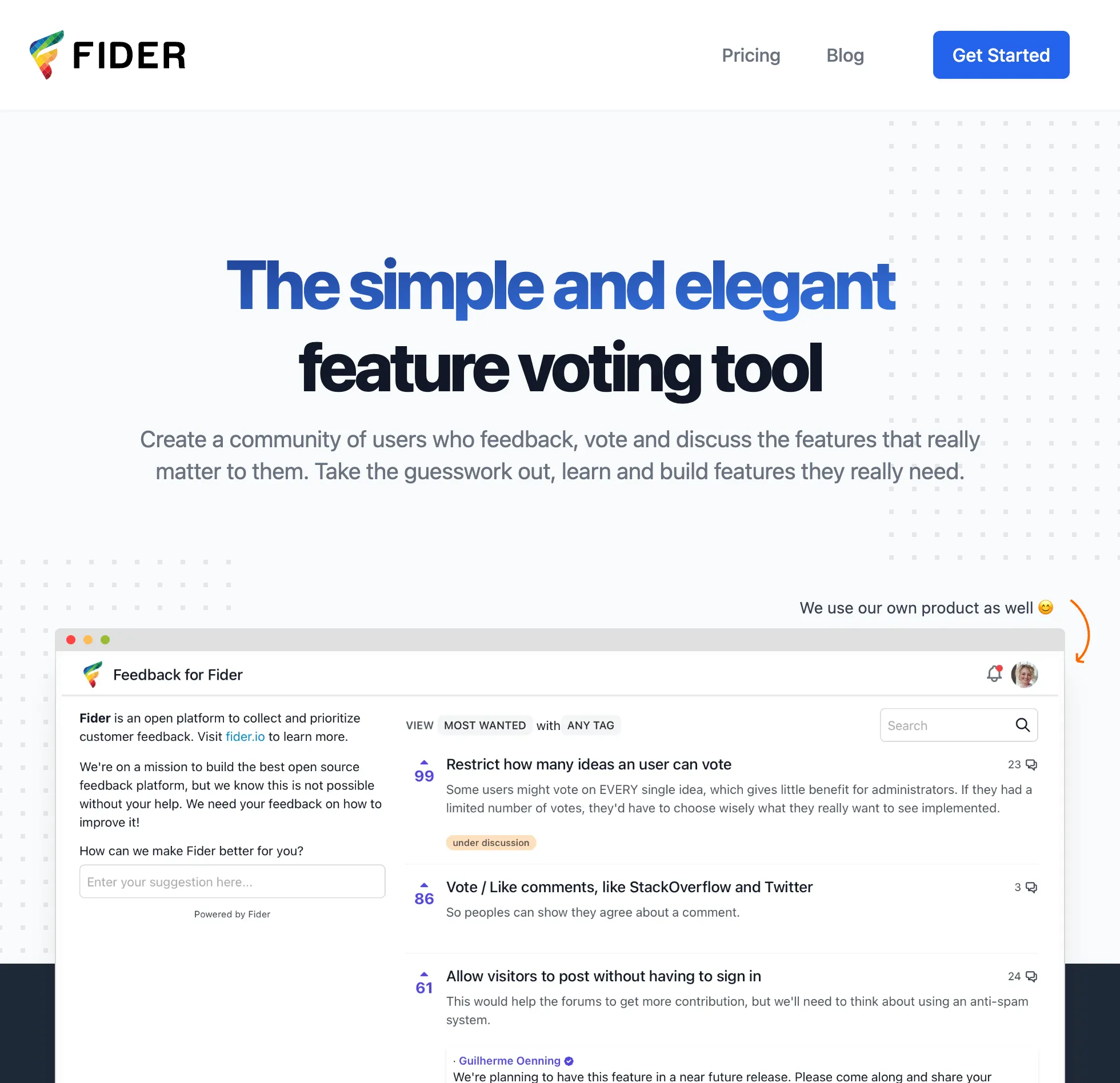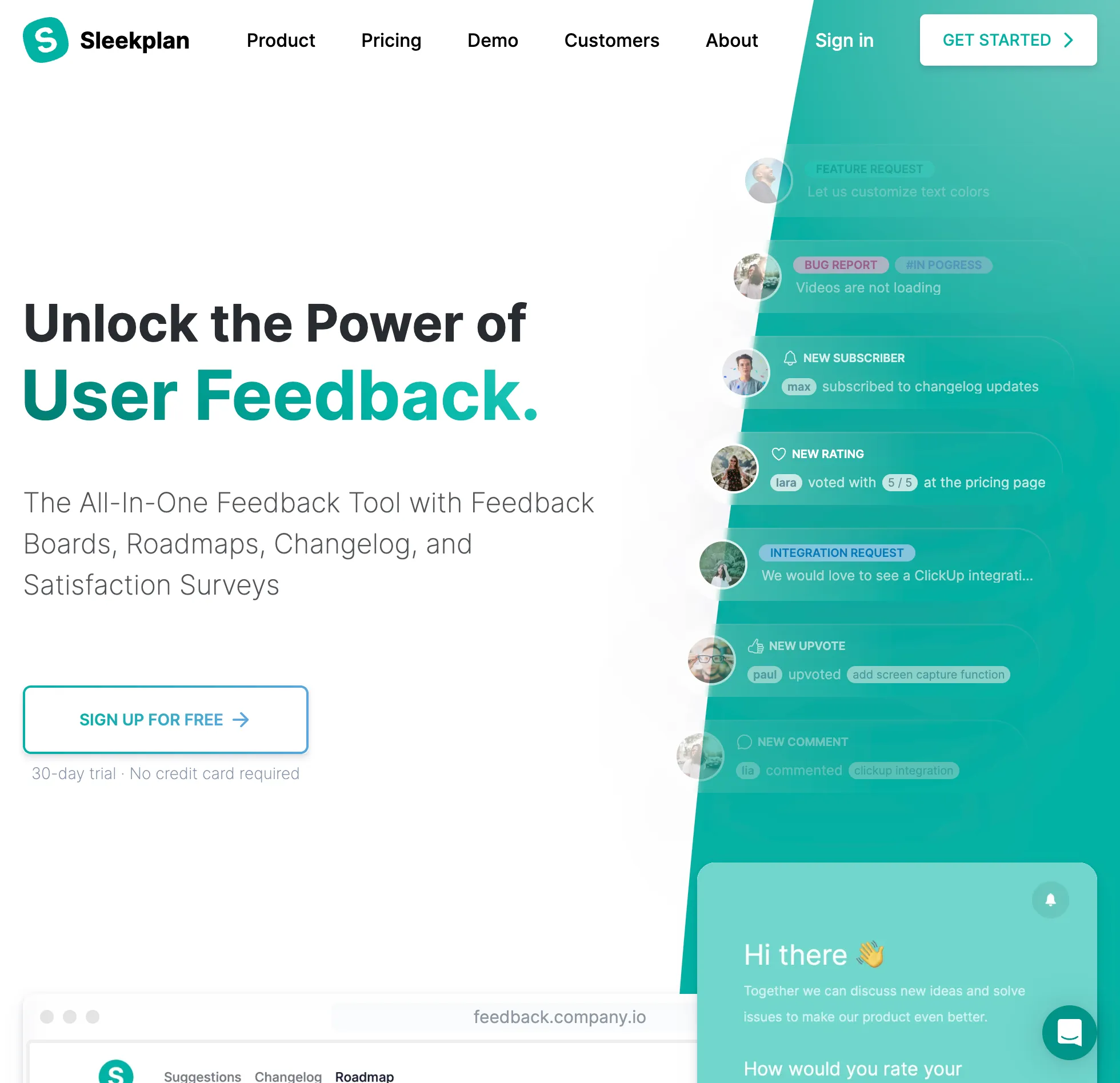5 Free Customer Feedback Tools That Actually Work in 2026

Most “free” feedback tools aren’t free. They limit you to 10 responses total, expire in 14 days, or require a credit card upfront.
We tested dozens of feedback tools with “free” plans. Most are useless: either so limited you hit the ceiling in days, or just 14-day trials in disguise.
Here are 5 that actually have real free plans. No credit cards, no expiring trials, just free tiers you can actually use.
What Makes a Free Plan Actually Usable?
Useless free plans have:
- 10 feedback items per month (or lifetime!)
- Essential features locked (like seeing who submitted feedback)
- 14-day “free” trials that auto-charge your card
- Limits that make the tool unusable (25 users total, 50 notes/month)
Usable free plans have:
- Enough capacity for real use (think hundreds, not tens)
- Core features included (voting, comments, basic organization)
- No sneaky time limits
- Room to actually grow before needing to pay
Here are 5 that pass the test.
The 5 Best Free Feedback Tools
1. UserJot: Built for Teams That Need Real Free Plans
We built UserJot because every other “free” plan had a catch. Canny limits you to 25 users. ProductBoard gives you 50 notes per month. Most expire after 14 days.
Our free plan is different because we actually want you to use it. No tricks, no sudden limits, just a feedback tool that works.

Free tier includes:
- Unlimited posts and users
- 2 feedback boards
- Public roadmap
- Changelog
- 3 admin seats
- No time limit, ever
What’s limited:
- Small “Powered by UserJot” link at the bottom (fair for free)
- No custom domain or branding on free plan
- 2 boards (each can have unlimited posts)
- 1 integration
When to upgrade: When you need custom domain ($29/month) or more than 2 boards.
Why it works: Teams with hundreds of users pay $0 on UserJot vs $156+/month on Canny. The 2-board limit is enough for feedback + feature requests. Most teams never need more.
Stop guessing what to build. Let your users vote.
Try UserJot free2. Canny

Canny is probably the most well-known feedback tool. Their free plan looks decent at first, until you understand the catch.
Free tier includes:
- 25 tracked users (here’s that catch)
- Unlimited boards
- All basic features
- Roadmap access
- Mobile apps
The catch: “tracked users” includes anyone who votes or comments. One active user commenting on 5 ideas? That’s 1 of your 25. Hit the limit and new users can’t engage at all.
Real limitations:
- Only 25 people can ever interact with your feedback
- Canny branding (tasteful but present)
- No custom domain
- Limited analytics
- You’ll outgrow this fast
When to upgrade: The second you have any traction. Their paid plan starts at $99/month.
Why it works (briefly): Fine for tiny validation projects with under 20 users. Most teams hit the 25 user limit within a week.
3. Fider

Fider is open source, which means you can run it completely free if you handle the hosting yourself.
Free tier includes:
- Everything if self-hosted
- Unlimited users
- Basic but solid voting features
- Email notifications
- OAuth support
- API access
Interface is basic but functional. Gets the job done.
Real limitations:
- No roadmap features
- No changelog system
- Very basic functionality
- Requires technical knowledge to set up
- You’re on your own for hosting, updates, backups
Cloud option: Managed hosting at $49/month if you don’t want to self-host.
Why it works: Run it forever on a $5/month server if you’re technical. The software is stable and you own your data.
4. Sleekplan

Sleekplan offers more features than you’d expect at this price point.
Free tier includes:
- 1 admin seat (but unlimited end users)
- 500,000 pageviews/month
- All core features (feedback, roadmap, changelog)
- GDPR compliant by default
- Clean, modern interface
Interface is functional, not pretty. But everything works.
Real limitations:
- Sleekplan branding
- Just 1 admin (no team collaboration)
- No custom domain
- Basic analytics only
When to upgrade: When you need team features or your own domain. At €13/month, it’s one of the cheapest upgrades available.
Why it works: That 500,000 pageview limit is huge. Most free plans limit users or posts, but Sleekplan limits pageviews - and sets the bar so high you’ll probably never hit it. The solo admin limit is annoying but workable for small teams.
5. ProductBoard

ProductBoard is an enterprise product management tool (their typical contracts are $50k+/year) that happens to offer a free tier.
Free tier includes:
- 1 maker seat
- 50 feedback notes per month
- Basic collection features
- Portal access
- The satisfaction of using the same tool as Zoom and Zendesk
Complex enterprise interface. Steep learning curve.
Real limitations:
- Only 50 notes per month (that’s 1-2 per day)
- No roadmap features
- No real analytics
- No integrations
- Feels like a demo, not a real free plan
When to upgrade: You won’t. If you need more than 50 notes/month, pick something else. Paid plans start at $19/user/month.
Why it works (barely): Only useful for initial research or customer interviews. Not for ongoing feedback.
Comparison Table
| Tool | Users | Items | Roadmap | Changelog | Real Limitation | Actually Usable? |
|---|---|---|---|---|---|---|
| UserJot | Unlimited | Unlimited | ✅ | ✅ | 2 boards only | Yes, indefinitely |
| Canny | 25 tracked | Unlimited | ✅ | ✅ | 25 user limit kills it | For 2-4 weeks |
| Fider | Unlimited | Unlimited | ❌ | ❌ | Self-host complexity | If you’re technical |
| Sleekplan | Unlimited | Unlimited | ✅ | ✅ | 1 admin only | Yes, for solo founders |
| ProductBoard | Unlimited | 50/month | ❌ | ❌ | 50 notes is nothing | For research only |
Which Tool Should You Pick?
For most teams: UserJot. Unlimited users, 2 boards is enough to start, actually free forever.
For tiny projects: Canny if you’ll stay under 25 users.
For technical teams: Fider if you can self-host.
For solo founders: UserJot or Sleekplan’s single admin works.
For user research: ProductBoard’s 50 notes might be enough for interviews.
FAQ
What’s the best free customer feedback tool?
UserJot offers the most generous free plan with unlimited users and posts. Canny limits you to 25 users, ProductBoard to 50 notes/month. For teams that need real ongoing feedback collection, UserJot or self-hosted Fider work best. To learn more about implementing effective customer feedback systems, check out our comprehensive guide.
Which free feedback tools don’t require credit cards?
All five tools mentioned (UserJot, Canny, Fider, Sleekplan, and ProductBoard) offer free plans without requiring a credit card. They’re actual free tiers, not trials.
Are there any truly free user feedback tools?
Yes. UserJot’s free plan is permanent with unlimited users and posts. Fider is open source and free if self-hosted. Sleekplan offers 500,000 pageviews/month free. These aren’t trials. They’re real free tiers you can use indefinitely.
What’s the best free alternative to UserVoice or Canny?
UserJot is the best free alternative. UserVoice starts at $699/month with no free plan. Canny’s free plan limits you to 25 users. UserJot gives you unlimited users, unlimited posts, roadmaps, and changelogs for free.
Which free feedback tool has unlimited users?
UserJot and Fider (self-hosted) both offer unlimited users on their free plans. Sleekplan technically has unlimited end users but only 1 admin. Canny limits you to 25 tracked users total.
Can I collect customer feedback for free forever?
Yes, with UserJot’s free plan or self-hosted Fider. UserJot gives you 2 boards with unlimited posts and users forever. Fider is open source, so if you self-host, it’s free indefinitely.
What’s the best open source feedback tool?
Fider is the most popular open source feedback tool. It’s actively maintained, has a helpful community, and can be self-hosted for free on a $5/month server. The interface is basic but it works reliably.
Do any free feedback tools include roadmaps and changelogs?
UserJot and Sleekplan both include roadmaps and changelogs in their free plans. Canny includes roadmaps but limits you to 25 users. Fider and ProductBoard don’t offer these features at all.
Looking for more options? Check out our guides for specific use cases: top 10 feedback tools with public voting or feedback tools for solo founders.